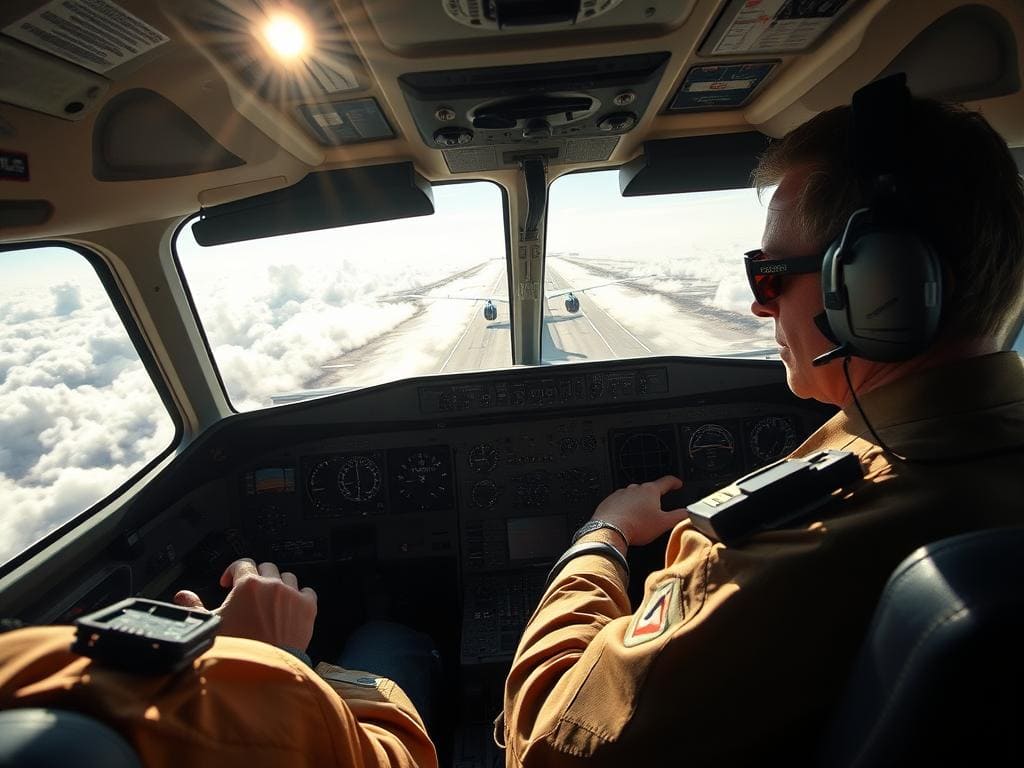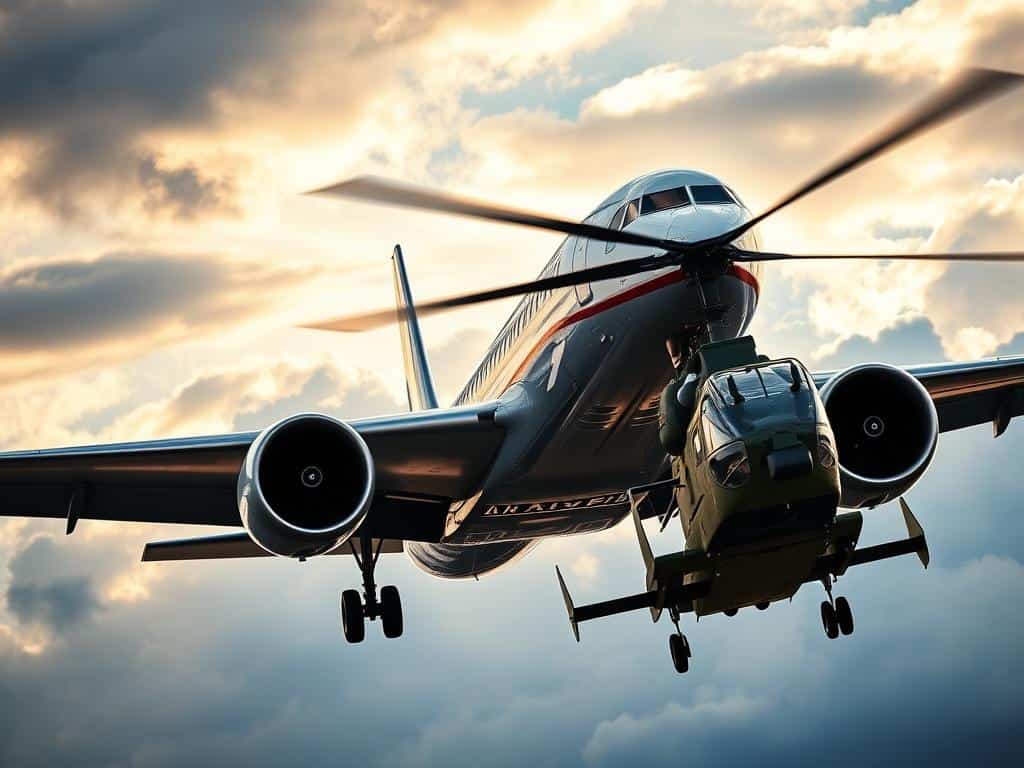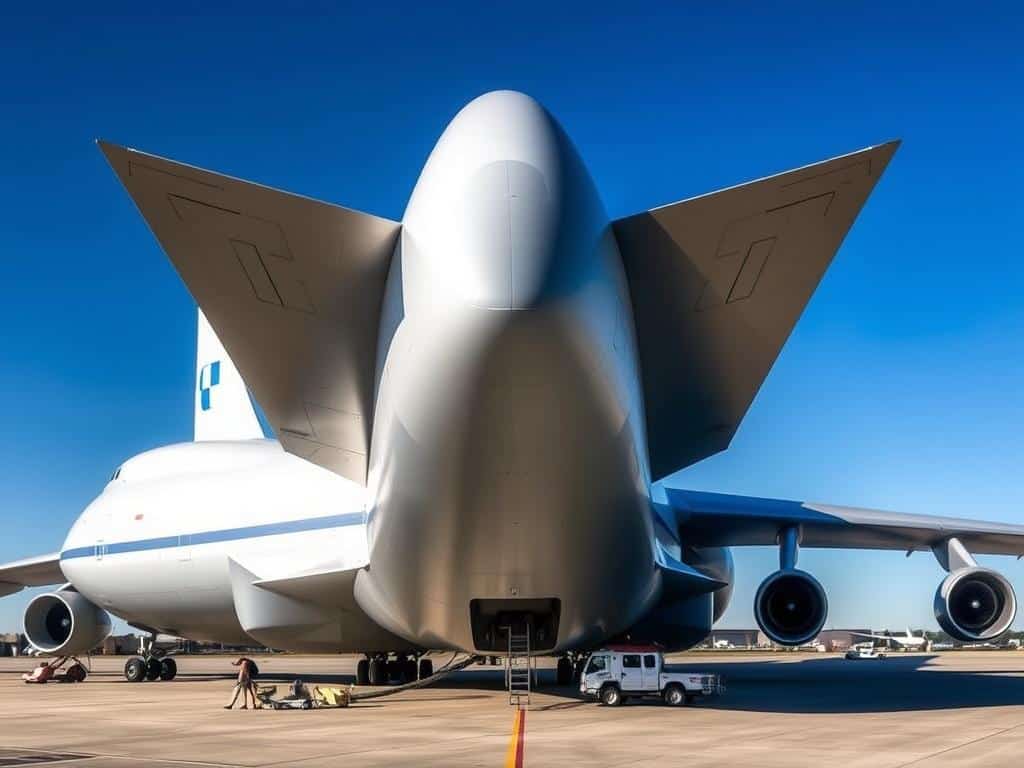Looking up at the sky, I feel safe knowing pilots are trained for emergency landings. Imagine being in a plane at 30,000 feet, facing a sudden problem. This training turns fear into control.
Emergency landings are a reality in flying. With a very low fatality rate for precautionary landings, pilots show great skill. They use their training to make quick, safe decisions.
This look into emergency landings shows how pilots face different challenges. Their deep training helps them handle tough situations well. Let’s explore more about flying and the people who keep us safe.
Key Takeaways
- Emergency landings encompass various critical scenarios, requiring thorough pilot training.
- The fatality rate for precautionary landings is impressively low at just 0.06%.
- Regular simulations prepare pilots for real-world emergency situations, enhance aviation safety.
- Understanding the risks associated with ditchings is critical, with a 20% fatality rate.
- Major U.S. airlines have recorded no fatal crashes in the last 15 years, showing effective safety measures.
- Nearly half of passengers in ditching incidents face the risk of hypothermia within minutes.
Understanding Emergency Landings
An emergency landing happens when a plane suddenly lands because of danger. This danger can come from many things like mechanical problems, health issues, bad weather, or security threats. Knowing why planes land in emergencies is key to understanding how safe flying is.
Definition and Causes
Emergency landings are serious and need quick action from pilots and crew. About 29% of these happen because of mechanical issues, showing how important plane upkeep is. Medical emergencies cause about 24% of these landings, pointing out the need for good medical care on planes.
Weather problems lead to nearly 19% of emergencies, showing how weather can be unpredictable. Security threats, though rare, cause about 2% of these landings, showing the wide range of safety concerns in flying.
Common Scenarios
Many situations can force pilots to make emergency landings. Engine failure is one, where a plane must land quickly because the engine stops working. Medical emergencies, like heart attacks, also require quick landings for care.
Severe weather, like thunderstorms, can make flying unsafe, leading pilots to find the nearest safe place to land. Security threats, like hijackings, also require quick landings to keep passengers safe. These situations highlight the need for skilled pilots, thorough training, and emergency plans that put passenger safety first.

How Pilots Handle Emergency Landings
In the world of aviation, I face many urgent situations. Knowing about emergency landings is key to staying safe. There are three main types: precautionary, forced, and ditching, each with its own risks.
Types of Emergency Landings
Precautionary landings happen when I think an emergency might occur but I have power. These aim for a safe landing with low risk, with a fatality rate of 0.06%. Forced landings, where power is lost suddenly, are riskier, with a 10% fatality rate. They require fast decisions and precision.
Ditching, or landing on water, is the most dangerous, with a 20% fatality rate. The sea’s unpredictability makes it even harder.
Emergency Training and Techniques
Emergency training is essential for me. I practice for all scenarios, like forced landings and engine failures. This training boosts my decision-making and risk management skills.
I mostly use full-motion flight simulators for training. They let me practice thousands of emergency scenarios. Each scenario requires me to follow checklists carefully, covering important steps like setting transponders and planning approaches.
Handling emergencies like uncontrolled engine fires is challenging. I learn to manage these by using fire handles and deploying extinguishers. My goal is to stay in control and focus on critical skills during emergencies.
Good communication with Air Traffic Control is also key. It ensures help is ready on the ground, even if it’s not needed right away.
Regular drills and psychological training help me stay calm in stressful situations. With ongoing training and real-life experience, I’m ready to handle emergencies. I focus on keeping everyone safe during emergency landings.
Conclusion
In aviation, emergency landings are key to safety when planes can’t fly normally. Each case shows how important pilot training and safety rules are. Pilots learn to deal with emergencies like engine failures and bad weather.
This training helps them handle tough situations well. It makes sure everyone on the plane is safe.
It’s also important for pilots to talk clearly with passengers. When passengers know what’s happening, they can help keep everyone safe. They should listen to the crew and follow their instructions.
This helps everyone stay safe during an emergency landing. It also builds trust in flying.
Even though emergency landings are rare, the chances of surviving are high. Airlines with good safety records and skilled crews show that being ready is key. They prepare for anything that might happen in the air.



